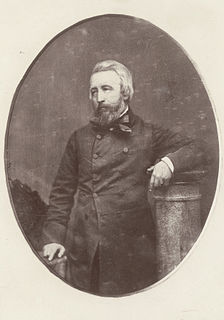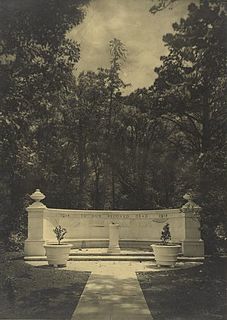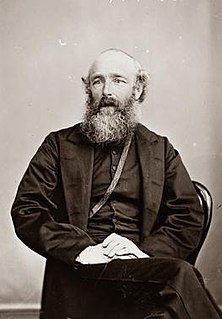
John Skinner Prout (1805–1876) was a British painter, writer, lithographer and art teacher who worked in Australia in the 1840s.
George O'Brien (1821–1888) was an engineer of aristocratic background who turned to art in 19th century Australasia, dying in poverty but leaving a body of remarkable work.

Harold Cazneaux was an Australian pictorialist photographer; a pioneer whose style had an indelible impact on the development of Australian photographic history. In 1916, he was a founding member of the Pictorialist Sydney Camera Circle. As a regular participator in national and international exhibitions, Cazneaux was unfaltering in his desire to contribute to the discussion about the photography of his times. He created some of the most memorable images of the early twentieth century.
Laurence Geoffrey Aberhart is a New Zealand photographer.
David Moore was an Australian photojournalist, historian of Australian photography, and initiator of the Australian Centre for Photography.
Eric Albert Lee-Johnson was a New Zealand artist and photographer.

Olive Cotton was a pioneering Australian modernist female photographer of the 1930s and 1940s working in Sydney. Cotton became a national "name" with a retrospective and touring exhibition 50 years later in 1985. A book of her life and work, published by the National Library of Australia, came out in 1995. Cotton captured her childhood friend Max Dupain from the sidelines at photoshoots, e.g. "Fashion shot, Cronulla Sandhills, circa 1937" and made several portraits of him. Dupain was Cotton's first husband.

John Kinder was a New Zealand Anglican clergyman, teacher, artist and photographer.

Fiona Dorothy Pardington is a New Zealand artist, her principal medium being photography.

John Cyril "Jack" Cato, F.R.P.S. was a significant Australian portrait photographer in the Pictorialist style, operating in the first half of the twentieth century. He was the author of the first history of Australian photography; The Story of the Camera in Australia (1955)
Joanna Margaret Paul was a New Zealand visual artist, poet and film-maker.
Ann Shelton is a New Zealand photographer and academic.
Peter Chanel Peryer was a New Zealand photographer. In 2000, he was one of the five inaugural laureates of the Arts Foundation of New Zealand.
Mary Eleanor Joachim (1874–1957) was a New Zealand book-binder in the Arts and Crafts tradition.
Ben Cauchi is a New Zealand fine art photographer, specialising in the use of early photographic techniques, most notably the wet collodion or ambrotype process.
Eleanor 'Ella' Juliet Spicer was a New Zealand artist. Her work is included in the collection of the Museum of New Zealand Te Papa Tongarewa, Turnbull library and Hocken library.
Janet Lilo is a visual artist from New Zealand.
Megan Lillian Jenkinson is a New Zealand photographer.
Di ffrench was a New Zealand photographic and performance artist and sculptor. Her work is in the collection of Museum of New Zealand Te Papa Tongarewa, Auckland Art Gallery Toi o Tāmaki and the Hocken Collections in Dunedin.
Adrienne Martyn is a New Zealand art photographer. Her work has been collected by numerous art galleries, museums and libraries in New Zealand including the Museum of New Zealand Te Papa Tongarewa, the Dowse Art Museum, the Auckland Art Gallery, the Christchurch Art Gallery and the Hocken Library.







